Home » Partridge Species » Chukar Hunting » Chukar Partridge – A Rugged, Nonnative Upland Bird
Chukar Partridge – A Rugged, Nonnative Upland Bird
- Climate Change Impact (Audubon) | +1.5°C - 14% Range Lost | +3.0°C - 24% Range Lost
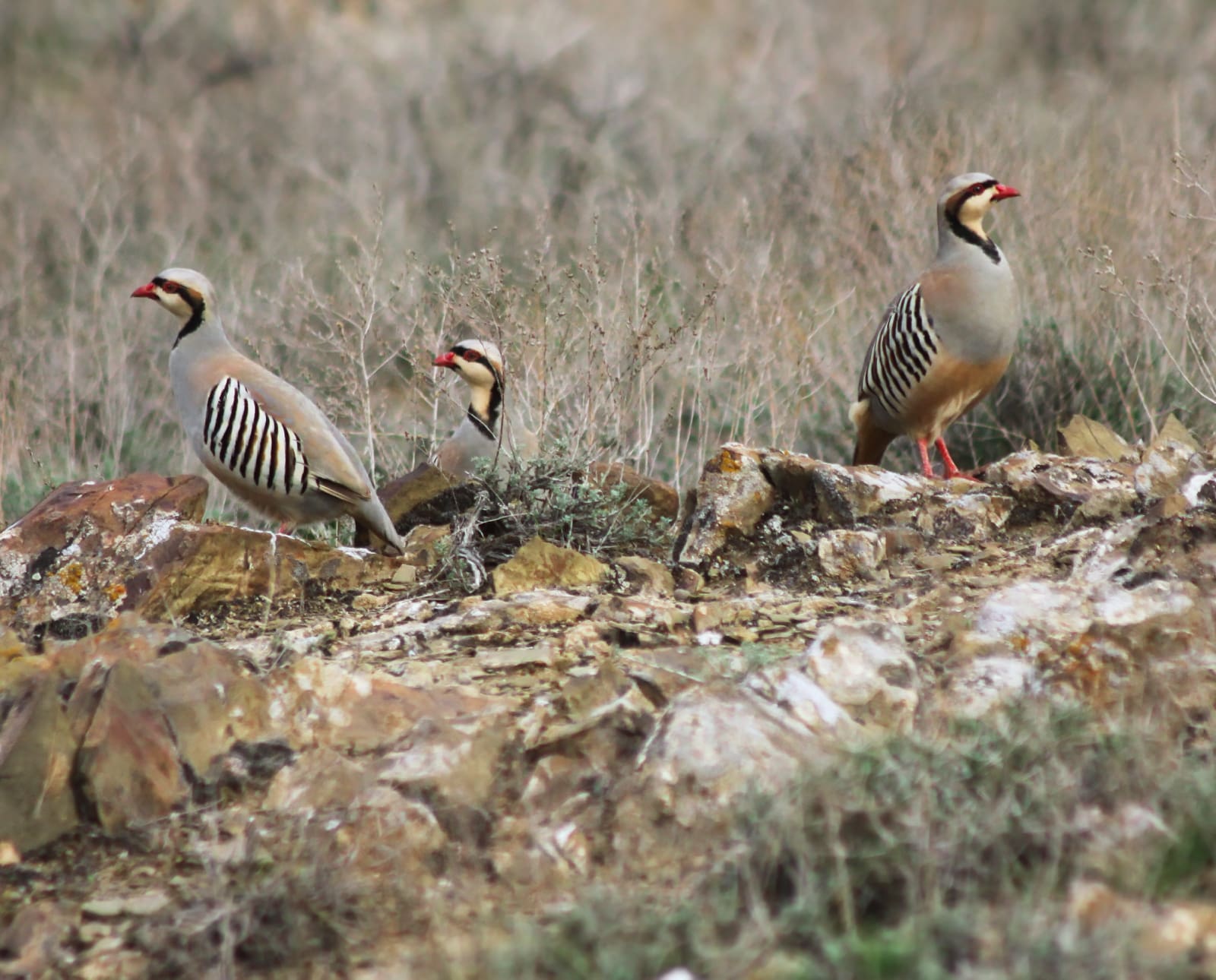
Gabby Zaldumbide is Project Upland's Editor in Chief. After growing…
Life history, habitat, range, and native landscape information for the devilish game birds known as chukar
A black slash slices over red-lined eyes, streaks down the breast, and connects at the keel as it cuts across the body of a flashy chukar partridge. Gray-blue feathers blend seamlessly into shades of dust-brown across its breast and back, but not its sides, where chukar apparently took some inspiration from zebras. Besides pheasants, chukars are arguably the most exotic-looking game birds in the United States. These birds have something in common: they didn’t evolve here.
Listen to more articles on Apple | Google | Spotify | Audible
Chukar are not native to North America. This bird’s home range spans the Middle East and Asia, including Turkey, Jordan, Tehran, Iran, Kyrgyzstan, Nepal, and Mongolia. In their native range, these birds have a penchant for steep, rocky outcroppings in arid landscapes. Their preference for rugged places translates to their North American range as well.
Since its introduction to the United States decades ago, chukar have become an iconic North American upland game bird, and those who hunt them are lovingly referred to as “not right in the head.” Let’s take a gander at this species’ life history, habitat preferences, and robust hunting culture.
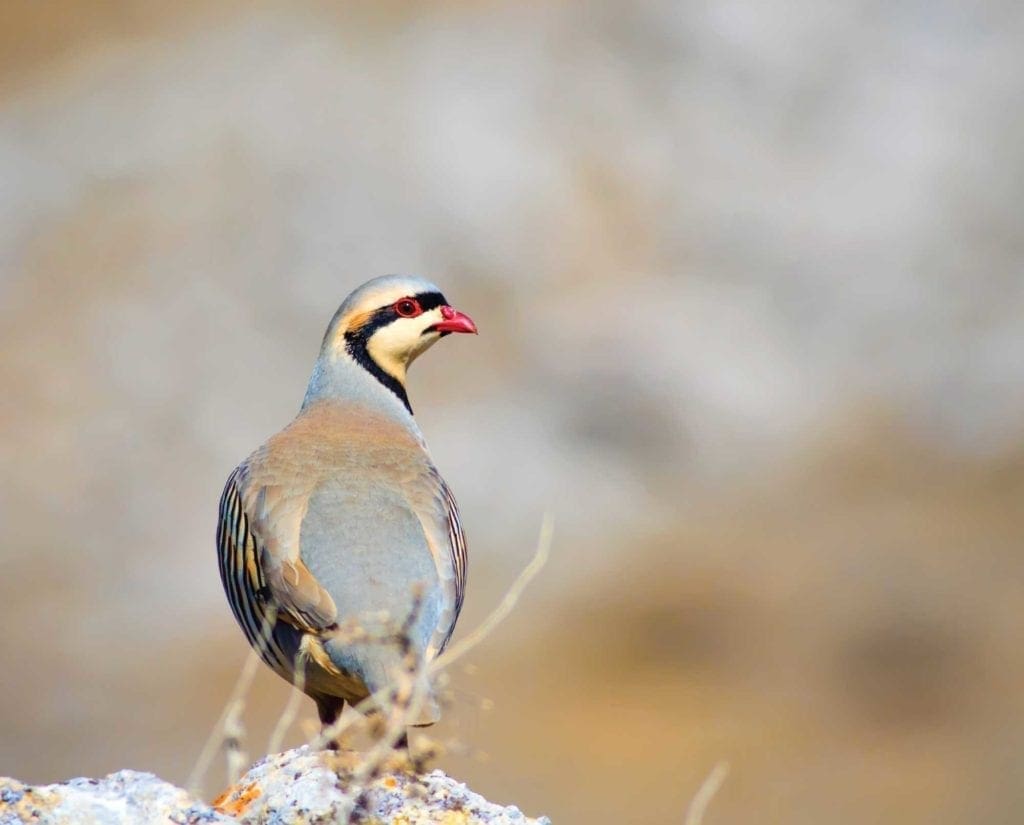
Chukar Habitat and Life History Information
| Characteristic | Comments |
| Scientific Name | Alectoris chukar |
| Taxonomic Order and Family | Order Galliformes, family Phasianidae |
| Body Size | 1-1.5 lbs, 12 inches tall, 20-inch wingspan |
| Clutch Size | 10-21 eggs, 1 brood annually |
| Diet | Seeds and leaves from grasses, especially the invasive, nonnative cheatgrass. They eat green grass leaves in fall and winter. |
| Habitat | Dry, relatively barren high-elevation shrublands. Look for steep rocky slopes, water, and sagebrush. |
| Range in North America | Rocky Mountains, Pacific Northwest, British Columbia |
| Native Range | Asia and the Middle East |
| Global Breeding Population | 7.8 million |
| Places You Can Hunt Chukar in North America | Arizona, British Columbia, California, Colorado, Hawaii, Idaho, Montana, Nevada, Oregon, Utah, Washington, Wyoming |
| Similar Species | The Przevalski’s or rusty-necklaced partridge, rock partridge, and Philby’s partridge |
Chukar are incredibly hardy birds that live in places most other critters wouldn’t dream of inhabiting. Chukar habitat generally consists of high-elevation rock outcroppings and short, stubbly grasslands on open mountain slopes.
“To put the country in perspective, the same places we hunt wild sheep, mountain goats, and high country mule deer are the same places we hike twice a week during our season for chukar,” said Matthew Davis, the founder of Final Rise.
“To survive avian and mammal predators, they live among rocks and cliffs to avoid being killed,” said Alan Smith, the vice president of the Utah Chukar and Wildlife Foundation (UCWF). According to the Western States Chukar and Gray Partridge Management Guidelines, chukar are regularly preyed upon by bobcats, falcons, hawks, coyotes, and owls. “Researchers surmised nearly one-half of predation events coincided with the autumn raptor migration period, which occurs from September to November throughout the range of chukar in the western US,” states the Guidelines. Eight percent of chukar mortality is attributed to hunter harvest.
In addition to protective landscape features, chukar rely on brooding areas and reliable water sources. UCWF helps provide water sources for chukar in areas without many natural springs. The organization installs rainwater catchment systems called guzzlers, allowing birds to access water during Utah’s hot summers.
Chukar are a little picky when it comes to selecting water sources. They prefer water sources with a canopy cover of at least 11 percent. These birds will readily visit water sources at canyon bottoms and on slopes, benches, and ridgelines between June and October each year. However, if a fire rolls through and eliminates nearby cover, chukar will stop using that watering source until protective vegetation returns.
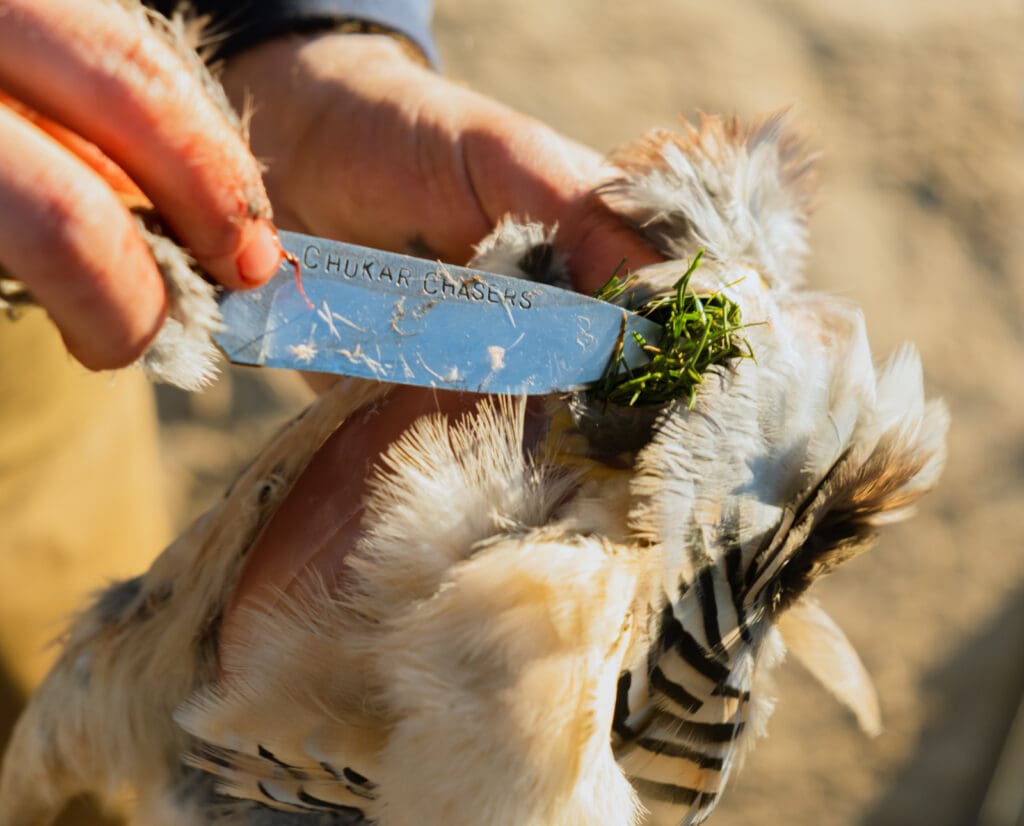
Regarding plants, chukar prefer habitats that consist of juniper, piñon pine, sagebrush, cheatgrass, bluebunch wheatgrass, indian rice grass, and Russian thistle. A study by J. H. Lowry from 2005 titled “Southwest Regional Gap Analysis Project: Final Report on Land Cover Mapping Methods” discussed that chukar prefer a handful of general plant communities. These locations include “Great Basin Xeric Mixed and Inter-Mountain Basins Sagebrush Shrubland, Great Basin Pinyon Juniper Woodland, Inter-Mountain Basins Mixed Salt Desert Scrub, Invasive Annual and Perennial Grassland, and Inter-Mountain Basins Semi-Desert Grassland” (Larsen, 2006).
Similar to other upland bird species, lead shot impacts wild chukar. In their 2003 paper titled “Fall diet of Chukars (Alectoris chukar) in eastern Oregon and discovery of ingested lead pellets,” researchers Walter and Reese found that 7.1 percent of 140 chukar crops and 5.7 percent of 123 chukar gizzards contained lead pellets. A study led by Randy Larsen titled “Grit size preferences and confirmation of ingested lead pellets in Chukars” from 2006 examined 106 crops and 75 gizzards. Two crops and eight gizzards contained lead pellets, and they ranged from #5 shot to #7.5 shot. He also found buckshot and turkey loads.
Chukar Hunting Culture
Hunting chukar is not for everyone. Because of the extreme terrain this bird inhabits, one must be prepared for a hot, dry, and physically demanding hunt.
“Chukar hunting is hands down the best exercise program in existence. Following big running pointing dogs up and down several thousand feet of vertical, for miles on end, keeps the lungs stretched and the heart pumping,” said Davis. “You really have to earn a wild chukar, and you’d be hard-pressed to find anyone who’s hunted them to say otherwise.”
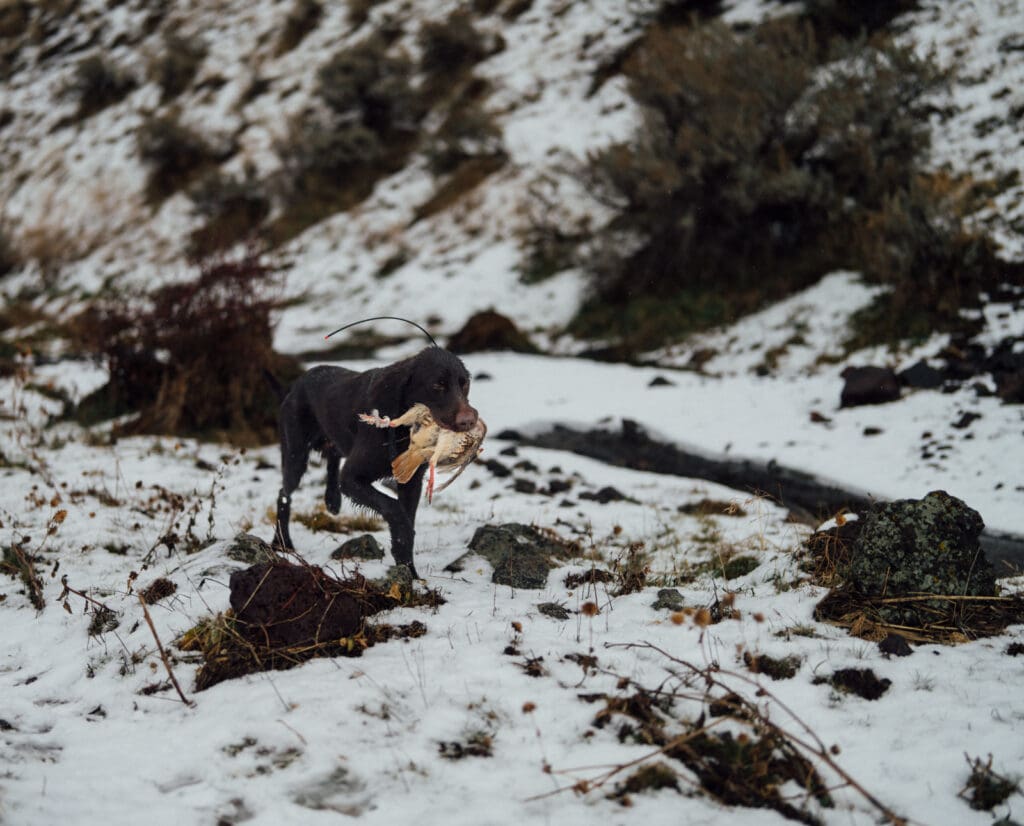
Other avid chukar hunters echo his sentiment. Danielle Schoenwolf, a professional upland hunting guide, chases chukar in Wyoming regularly and emphasizes that “hunting them is a labor of love.” “Hunting chukars is a wild adventure but one, in my experience, that carries a culture of isolation,” she said. “Out of all the upland birds you can hunt, chukar is the one bird hunt where you are almost guaranteed not to run into anyone else while doing it.”
Schoenwolf’s Vizsla, Brittany, and English Setter make for great chukar hunting companions. “Having a good bird dog on your side will help when chukar hunting,” said Ryan Lisson, a wildlife biologist and chukar hunter. Alan Smith certainly knows that feeling; he hunts chukar in Utah with his Brittany, too.
“I didn’t realize how much I would enjoy hunting with a dog, and there were a lot of weekends when I went hunting because the dog wanted to go,” Smith said. “I wouldn’t hunt chukars if it wasn’t for my dog.”
“If you do not have a dog, pausing often is a good strategy,” said Lisson. “Not just for catching your breath, but so you can also listen for their chuk-chuk-chukar call.” Lisson also recommends descending on groups of chukar from the upslope when possible. “They will often run uphill and fly downhill,” he elaborated. “While you would rarely be able to catch up to a running bird, you may pull off a shot if they fly below you.”
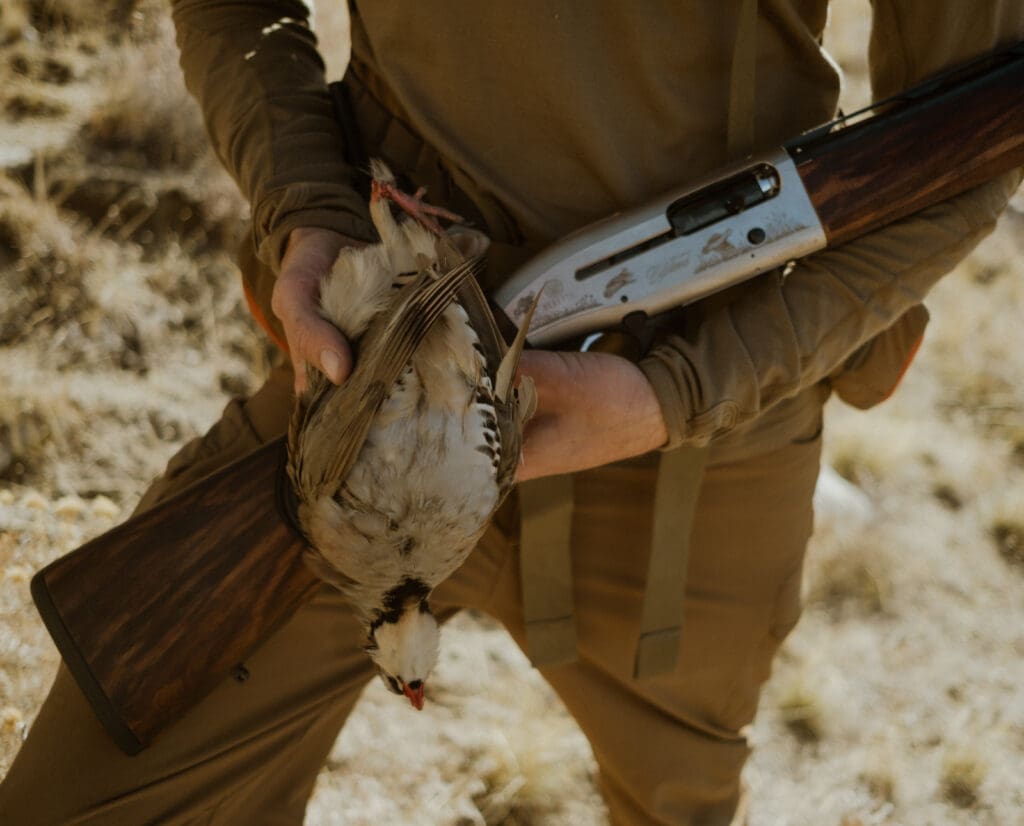
Chukar Management Techniques
Glen Christensen began studying chukar as a graduate student at the University of Nevada. His professor, Dr. Ira La Rivers, pitched the idea of doing his graduate work on chukar to him. So, he set off studying that “sassy chukar bird,” and in 1951, he began collecting research. Christensen’s data complemented work done by the state wildlife department to establish the first-ever chukar study in 1952. That study launched the development of baseline chukar population management and monitoring practices.
“Most of the emphasis in Nevada after 1954 has been placed upon the development of satisfactory management practices, particularly methods for determining and evaluating production and harvest data,” wrote Christensen.
In 1970, Christensen wrote a periodical about the introduction and management of chukar. The demand for it has remained strong. It is available here. Published by the Nevada Department of Wildlife, it includes 70-ish pages detailing chukar life history and management. He lists out the most popular ways of documenting chukar back then, including:
- Estimating their annual population via transects, brood counts, call counts, and counting concentrated birds
- Determining production by obtaining an adult:young ratios, conducting waterhole counts, and completing road and walking surveys
- Evaluating population trends by taking precipitation patterns into account
Today, several Western states still need modern, chukar-specific management plans. However, Nevada and Oregon estimate the number of chukar per mile by conducting helicopter and roadside surveys, respectively. California and Oregon both host programs that measure chick production. It’s recommended that all states use banding programs and camera traps at water sources to help track chukar populations in the West.
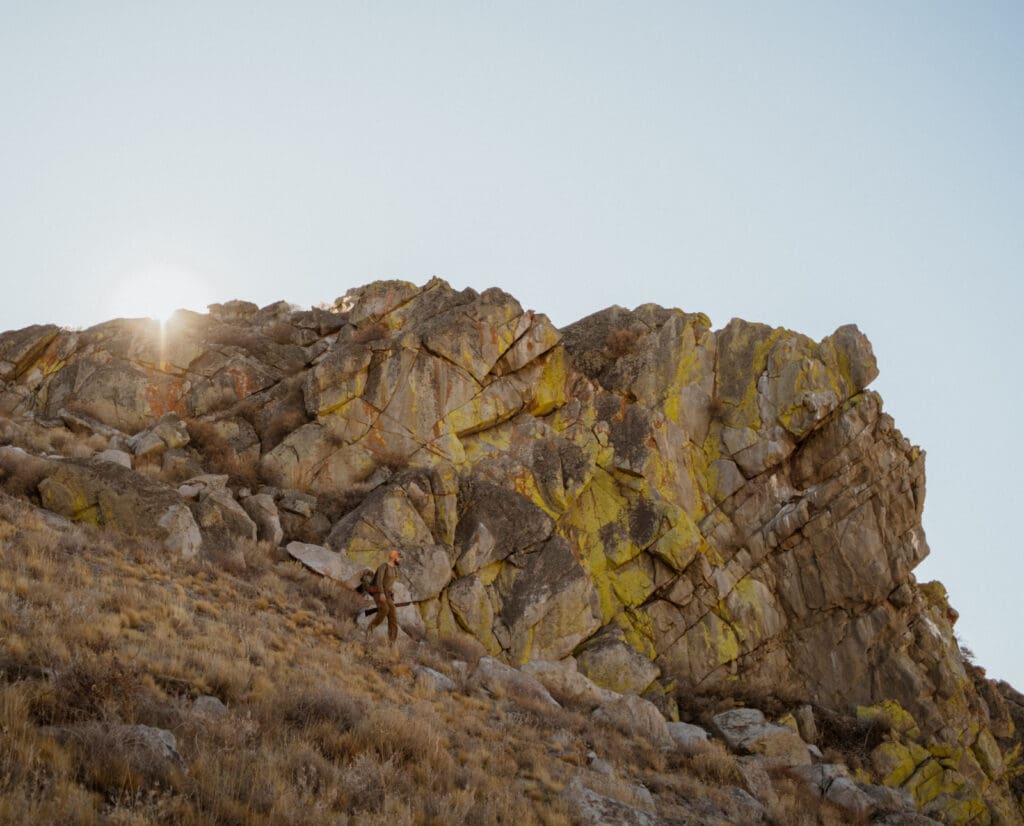
According to the Western States Guidelines, “The Western States Partridge Working Group developed a list of research needs which would improve our understanding, and possibly management, of chukar populations. The following list of chukar research needs should not be considered complete or final”:
- Develop a consistent and efficient fall index of chukar abundance
- Identify habitat requirements of chukar populations
- Determine effects of large-scale wildfire on chukar populations
- Identify year-round limiting factors (including weather) for chukar populations
- Determine population characteristics and document seasonal distribution
- Conduct an economic analysis of chukar hunting in the western U.S. and Canada
- Develop effective and consistent harvest survey methods
- Determine the age and gender structure of harvested populations
There’s still much to be done regarding chukar management in the western United States. Thankfully, researchers like Larsen are doing a great job of collecting modern, in-depth information on chukar populations.
Chukar Hunting in North America is Challenging Yet Rewarding
“If chasing wild chukar is on your radar, plan to do it on their terms. No ifs, ands, or buts about it,” said Davis. “More often than not, their terms means at the top of the nastiest mountain where most folks wouldn’t even consider hiking to.” He mentioned that the phrase “chukar hunters have big legs and little heads” affectionately teases this hunting community; anyone who enjoys hiking 10-plus miles in search of birds might have a couple of screws loose.
“I enjoy hunting of all types, but it’s the difficulty of hunting chukar that makes them so damn fun,” Davis continued. “If you can slip a few wild chukar in your vest, you’ve really done something special.”
Gabby Zaldumbide is Project Upland's Editor in Chief. After growing up in southern Wisconsin, she moved to Gunnison, Colorado, where she now lives with eight dogs, three horses, and a wobbly cat. She herds cows for a local rancher on the side.




